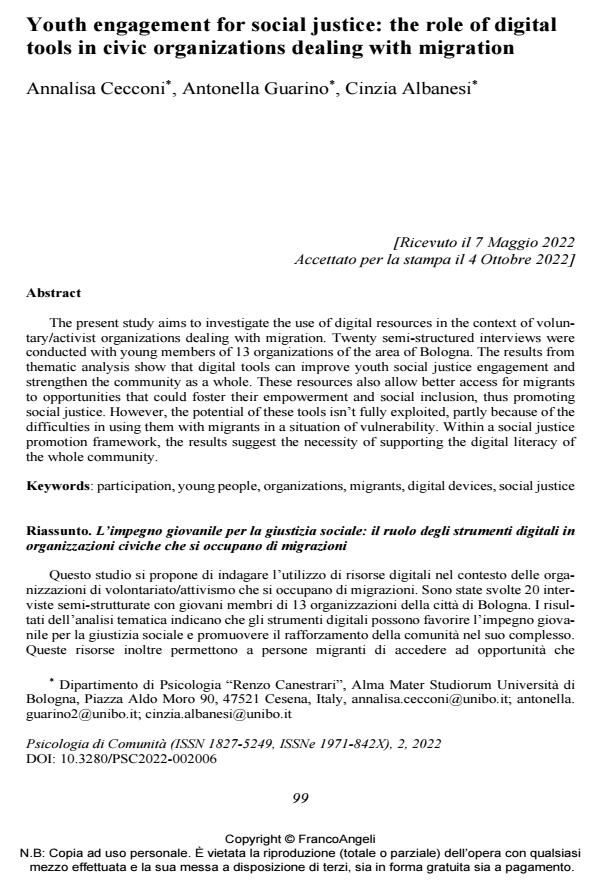Youth engagement for social justice: the role of digital tools in civic organizations dealing with migration
Journal title PSICOLOGIA DI COMUNITA’
Author/s Annalisa Cecconi, Antonella Guarino, Cinzia Albanesi
Publishing Year 2022 Issue 2022/2
Language English Pages 20 P. 99-118 File size 230 KB
DOI 10.3280/PSC2022-002006
DOI is like a bar code for intellectual property: to have more infomation
click here
Below, you can see the article first page
If you want to buy this article in PDF format, you can do it, following the instructions to buy download credits

FrancoAngeli is member of Publishers International Linking Association, Inc (PILA), a not-for-profit association which run the CrossRef service enabling links to and from online scholarly content.
The present study aims to investigate the use of digital resources in the context of volun-tary/activist organizations dealing with migration. Twenty semi-structured interviews were conducted with young members of 13 organizations of the area of Bologna. The results from thematic analysis show that digital tools can improve youth social justice engagement and strengthen the community as a whole. These resources also allow better access for migrants to opportunities that could foster their empowerment and social inclusion, thus promoting social justice. However, the potential of these tools isn’t fully exploited, partly because of the difficulties in using them with migrants in a situation of vulnerability. Within a social justice pro-motion framework, the results suggest the necessity of supporting the digital literacy of the whole community.
Keywords: participation, young people, organizations, migrants, digital devices, social justice
Annalisa Cecconi, Antonella Guarino, Cinzia Albanesi, Youth engagement for social justice: the role of digital tools in civic organizations dealing with migration in "PSICOLOGIA DI COMUNITA’" 2/2022, pp 99-118, DOI: 10.3280/PSC2022-002006